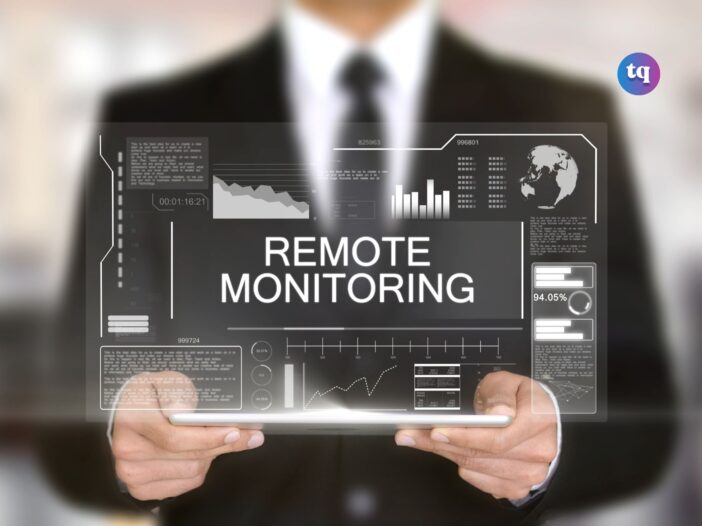
In today’s digital age, cybersecurity has become a pressing concern for businesses of all sizes. The frequency and sophistication of cyberattacks have risen, and organizations must take robust security measures to safeguard their data and infrastructure. Remote monitoring has become essential to an organization’s cybersecurity strategy in 2024. Here’s a closer look at remote monitoring and how an MSP can help enterprises improve their cybersecurity for 2024.
Table of Contents
Remote Monitoring
Remote monitoring refers to monitoring an organization’s network and systems remotely. This process involves deploying specialized software tools and technologies that enable IT professionals to watch the network activity, identify potential security threats, and proactively mitigate them.
More Endpoints to Protect
Remote monitoring has become essential for several reasons. Firstly, the prevalence of remote work has resulted in a surge in the number of endpoints that need securing. With employees working from home or while on the go, the traditional security perimeter has become porous, making it easier for cybercriminals to breach an organization’s systems. Remote monitoring helps IT professionals keep track of all endpoints, including laptops, mobile devices, and IoT devices, and detect any suspicious activity.
Continuous Monitoring
Secondly, remote monitoring enables continuous monitoring of an organization’s network and systems, which is vital in promptly detecting and responding to security incidents. Cyberattacks can happen anytime, and traditional methods of detecting incidents, such as periodic manual scans, may not be sufficient. Remote monitoring enables IT professionals to detect security incidents immediately and take immediate action to prevent them from causing harm.
Compliance and Regulations
Thirdly, remote monitoring helps organizations comply with regulatory requirements. Many industries, such as healthcare and finance, are subject to strict data privacy and security regulations. Remote monitoring gives organizations real-time visibility into their network activity, allowing them to identify and address potential compliance issues before they become problematic.
Const-Effective
Fourthly, remote monitoring is cost-effective and scalable. Organizations do not have to invest in expensive hardware and software, which can be challenging to maintain and upgrade. Remote monitoring services are typically provided by third-party vendors with the expertise and resources to deploy and manage the necessary tools and technologies. Working with a provider makes it easier for organizations to scale their security operations as their needs evolve without incurring additional costs.
MSP Remote Monitoring
Managed Service Providers (MSPs) are third-party vendors that provide remote monitoring services and other essential digital services that operate an enterprise’s IT needs and infrastructure. MSPs can take the burden of cybersecurity off the shoulders of an organization’s internal IT team, allowing them to focus on other critical tasks. MSPs offer various cybersecurity services, including remote monitoring, threat detection, vulnerability management, and incident response. MSPs operate from network operations centers (NOCs), monitoring and responding promptly to client IT issues. If your company is wondering what is a NOC and how it can benefit business, visit ConnectWise to learn more about essential cybersecurity tools, platforms, and strategies.
MSPs utilizing remote monitoring tools from ConnectWise can provide remote access services to organizations of all sizes, from small businesses to large enterprises. They have the expertise and resources to deploy and manage the necessary tools and technologies to secure an organization’s network and systems. Reliable MSPs use a range of the best software from ConnectWise to offer all of the cybersecurity and monitoring services enterprises require to manage their extensive digital networks and customer data.
24/7 Monitoring
MSPs can provide organizations with a range of benefits. Firstly, they can provide 24/7 monitoring, which is critical in today’s fast-paced business environment. Cyberattacks can happen anytime, and organizations must prepare to respond quickly. MSPs can provide real-time threat detection and response, reducing the risk of a cyberattack causing significant damage.
External IT Team
Secondly, MSPs can provide organizations access to a team of cybersecurity experts. These experts have the knowledge and experience to identify potential security threats and take appropriate action to mitigate them. MSPs can also provide organizations with regular reports and insights into their network activity, helping them to identify areas of weakness and address them proactively.
Cybersecurity Solutions
Lastly, MSPs can provide organizations with cost-effective cybersecurity solutions. Building an in-house cybersecurity team can be expensive, especially for smaller organizations. MSPs offer a range of cybersecurity services at a fraction of the cost of hiring a full-time team. MSPs make it easier for organizations to prioritize their cybersecurity needs and invest in the solutions that matter most.
Bottom Line
Remote monitoring has become essential to an organization’s cybersecurity strategy in 2024. The prevalence of remote work, the need for continuous monitoring, and regulatory requirements have made it critical for organizations to implement remote monitoring solutions.
MSPs can provide organizations with cost-effective and scalable cybersecurity solutions that help them stay secure and compliant. Organizations must choose their MSPs carefully and ensure they have the expertise and resources to provide effective remote monitoring services. With the right MSP partner, organizations can enhance their cybersecurity posture and mitigate the risks of cyberattacks.